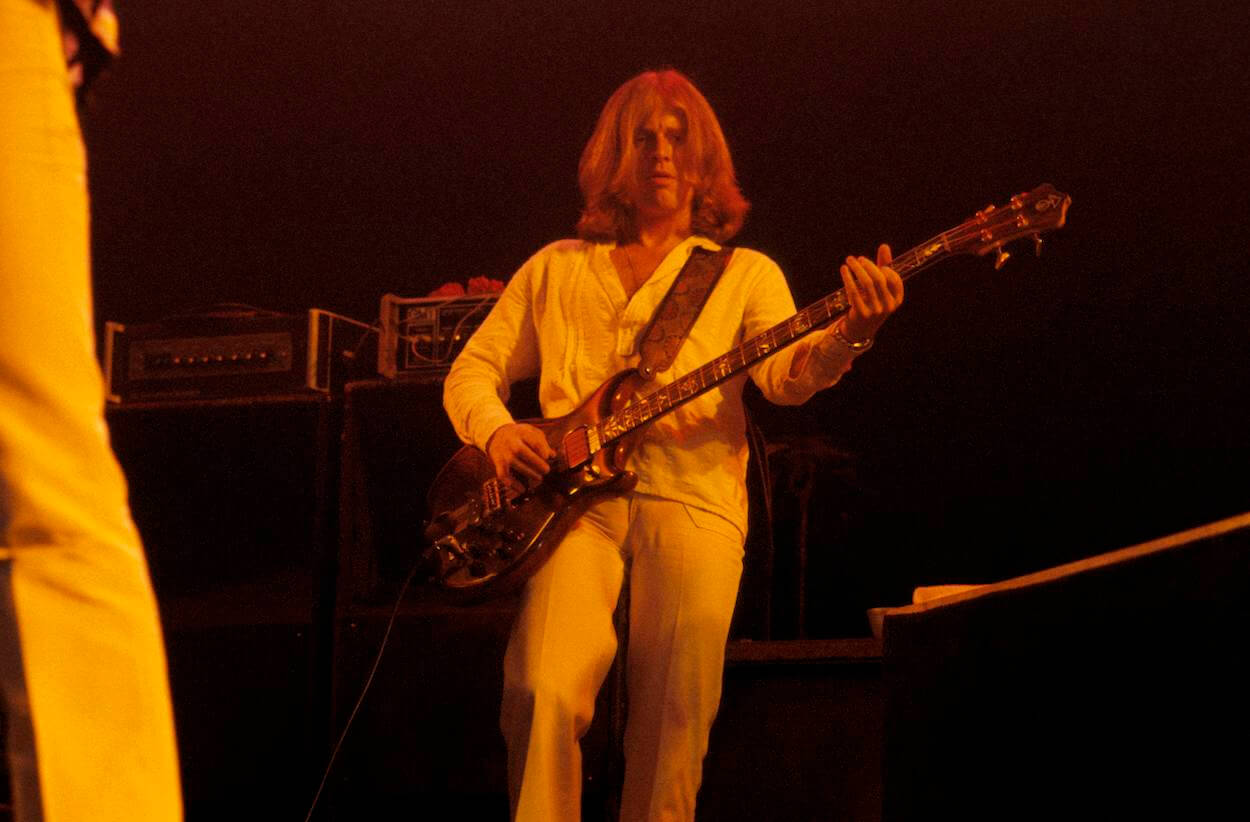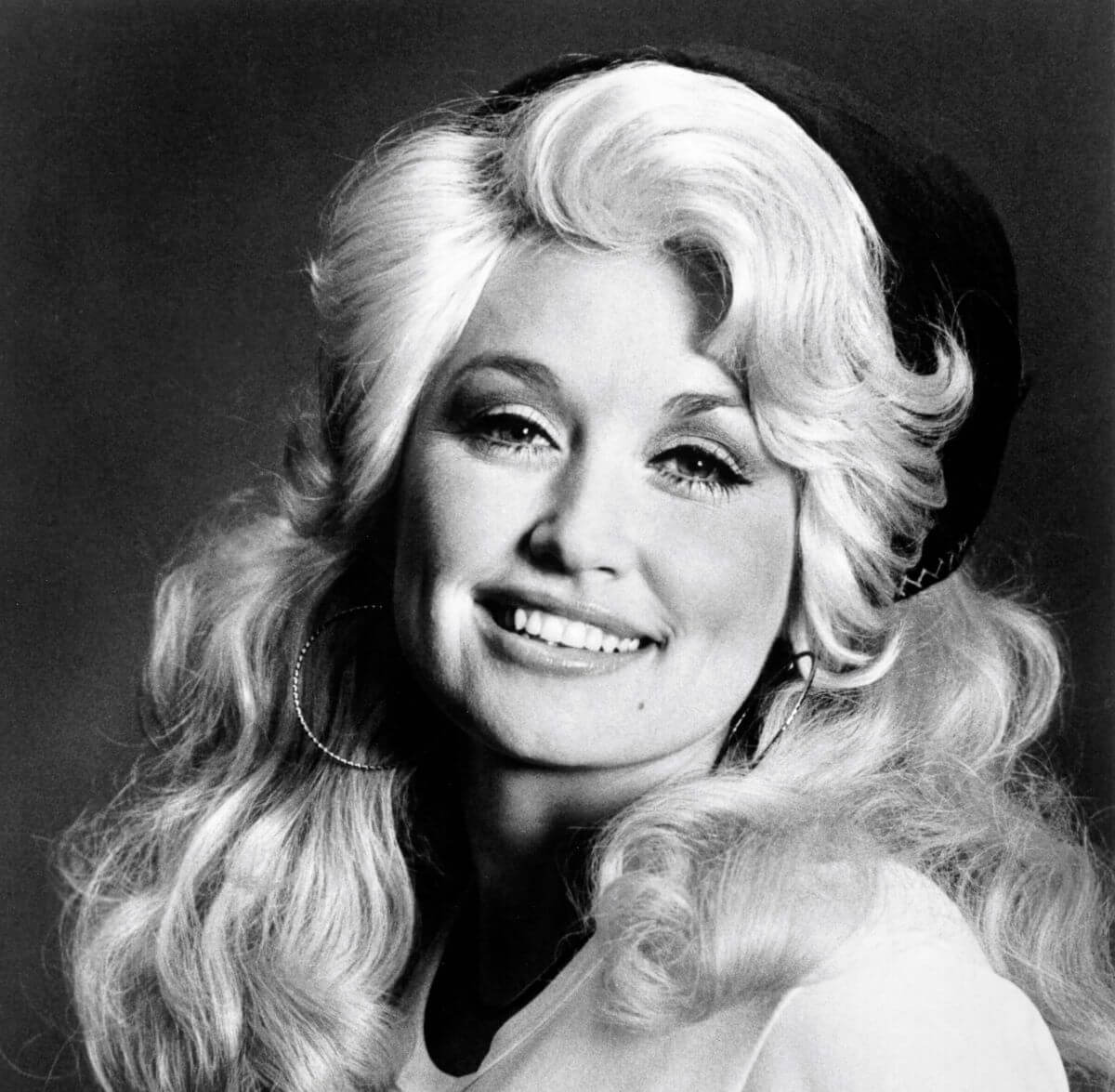
Led Zeppelin: John Paul Jones Tried Grabbing the Spotlight and It Never Worked Out
Everyone had a chance to shine in Led Zeppelin, even bassist John Paul Jones. Guitarist Jimmy Page formed the band to express his creative vision, but he said the key to the first album and beyond was not excluding the other members. Still, things didn’t work out when Jones took singer Robert Plant’s advice about grabbing the spotlight.

John Paul Jones tried taking the spotlight on stage but ended up near the back
Led Zeppelin concerts lasted hours. Plant starred in the proceedings standing front and center. Page danced with his guitar and played solos on almost every song. Drummer John Bonham shined during his “Moby Dick” solos. He was an ace musician skilled on many instruments, but Jones rarely found himself as the focus.
As he told Light & Shade: Conversations With Jimmy Page author Brad Tolinski, he took Plant’s advice and tried grabbing the spotlight, but it never worked out.
“Robert always used to say that onstage I should stand much nearer to the front–get some light on me and all that, from the visual angle. And I would try. I would start at that front, and I would just move backward and backward. I would always end up in my favorite position, which was as close to the bass drum as possible.”
John Paul Jones
Jones’ migration from the front of the stage toward the back boiled down to two things — his disinclination to be the star and his desire to serve the band better.
Jones preferred playing bass near John Bonham’s drums since he could lock in better
Jones started his music career as a London session musician. He and Page anonymously played on some of the same songs long before they joined forces in Led Zeppelin. In addition to being a talented musician on various instruments — he played bass, keyboards, mandolin, and more in the band — Jones was a gifted composer and arranger.
Yet his main role was playing bass. Jones felt he served the band better when he shunned the spotlight.
“I used to enjoy locking into John Bonham’s drums very tightly. I suppose it was my session background,” Jones told Tolinski. “A good session was one where the rhythm section really locked together. In Led Zeppelin, I would listen to the bass drum and be very careful not to cross it or diminish its effectiveness. I really wanted the drums and bass to be as one unit. That’s what drove the band along. It was important to be rock solid so Jimmy and Robert could be more free to improvise and experiment.”
By sliding from the front of the stage toward the back, Jones could hear (and very likely feel) Bonham’s massive bass drum. That allowed his bass to form the other part of a rhythm section that formed the backbone of the band.
Fast forward to the 8:00 minute of that video above. Jones and Bonham fit together a two-piece puzzle, forming one rock-solid groove underneath Page’s solo. The studio version of the Led Zeppelin I song is the same way. Jones and Bonham formed a dynamic duo on most songs, but tunes such as “Rock and Roll,” “Four Sticks,” “In My Time of Dying,” and “Fool in the Rain” are fine displays of their rhythmic interplay.
Bonham never got enough credit for making Led Zeppelin songs sound like Led Zeppelin songs. The bassist deserves a nod, too. John Paul Jones shunned the spotlight in Led Zeppelin, and by doing that, he formed a tighter rhythm section that made the band one of the most potent groups of their era.
For more on the entertainment world and exclusive interviews, subscribe to Showbiz Cheat Sheet’s YouTube channel.



